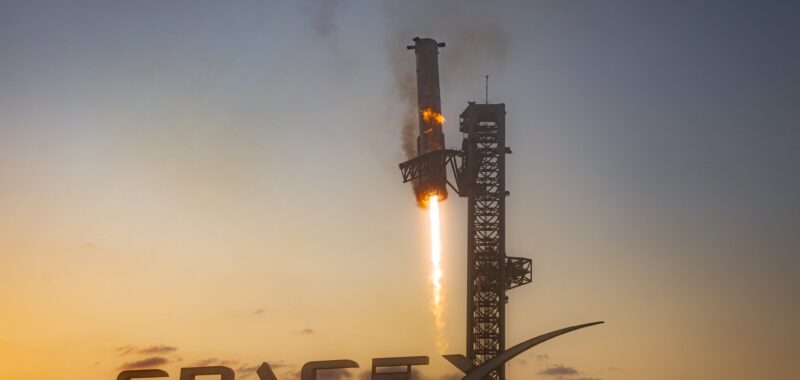Is this a free speech issue? … SpaceX responded to the dispute quickly, suing the California commission in federal court on Tuesday, Reuters reports. The company seeks an order that would bar the agency from regulating the company’s workhorse Falcon 9 rocket launch program at Vandenberg. The lawsuit claims the commission, which oversees use of land and water within the state’s more than 1,000 miles of coastline, unfairly asserted regulatory powers. Musk’s lawsuit called any consideration of his public statements improper, violating speech rights protected by the US Constitution. (submitted by brianrhurley)
SpaceX launches 100th rocket of the year. SpaceX launched its 100th rocket of the year early Tuesday morning and followed it up with another liftoff just hours later, Space.com reports. SpaceX’s centenary mission of the year lifted off from Florida with a Falcon 9 rocket carrying 23 of the company’s Starlink Internet satellites aloft.
Mostly Falcon 9s … The company followed that milestone with another launch two hours later from the opposite US coast. SpaceX’s 101st liftoff of 2024 saw 20 more Starlinks soar to space from Vandenberg Space Force Base in California. The company has already exceeded its previous record for annual launches, 98, set last year. The company’s tally in 2023 included 91 Falcon 9s, five Falcon Heavies, and two Starships. This year the mix is similar. (submitted by Ken the Bin)

Fifth launch of Starship a massive success. SpaceX accomplished a groundbreaking engineering feat Sunday when it launched the fifth test flight of its gigantic Starship rocket and then caught the booster back at the launch pad in Texas with mechanical arms seven minutes later, Ars reports. This achievement is the first of its kind, and it’s crucial for SpaceX’s vision of rapidly reusing the Starship rocket, enabling human expeditions to the Moon and Mars, routine access to space for mind-bogglingly massive payloads, and novel capabilities that no other company—or country—seems close to attaining.
Catching a rocket by its tail … High over the Gulf of Mexico, the first stage of the Starship rocket used its engines to reverse course and head back toward the Texas coastline. After reaching a peak altitude of 59 miles (96 kilometers), the Super Heavy booster began a supersonic descent before reigniting 13 engines for a final braking burn. The rocket then shifted down to just three engines for the fine maneuvering required to position the rocket in a hover over the launch pad. That’s when the launch pad’s tower, dubbed Mechazilla, ensnared the rocket in its two weight-bearing mechanical arms, colloquially known as “chopsticks.” The engines switched off, leaving the booster suspended perhaps 200 feet above the ground. The upper stage of the rocket, Starship, executed what appeared to be a nominal vertical landing into the Indian Ocean as part of its test flight.

